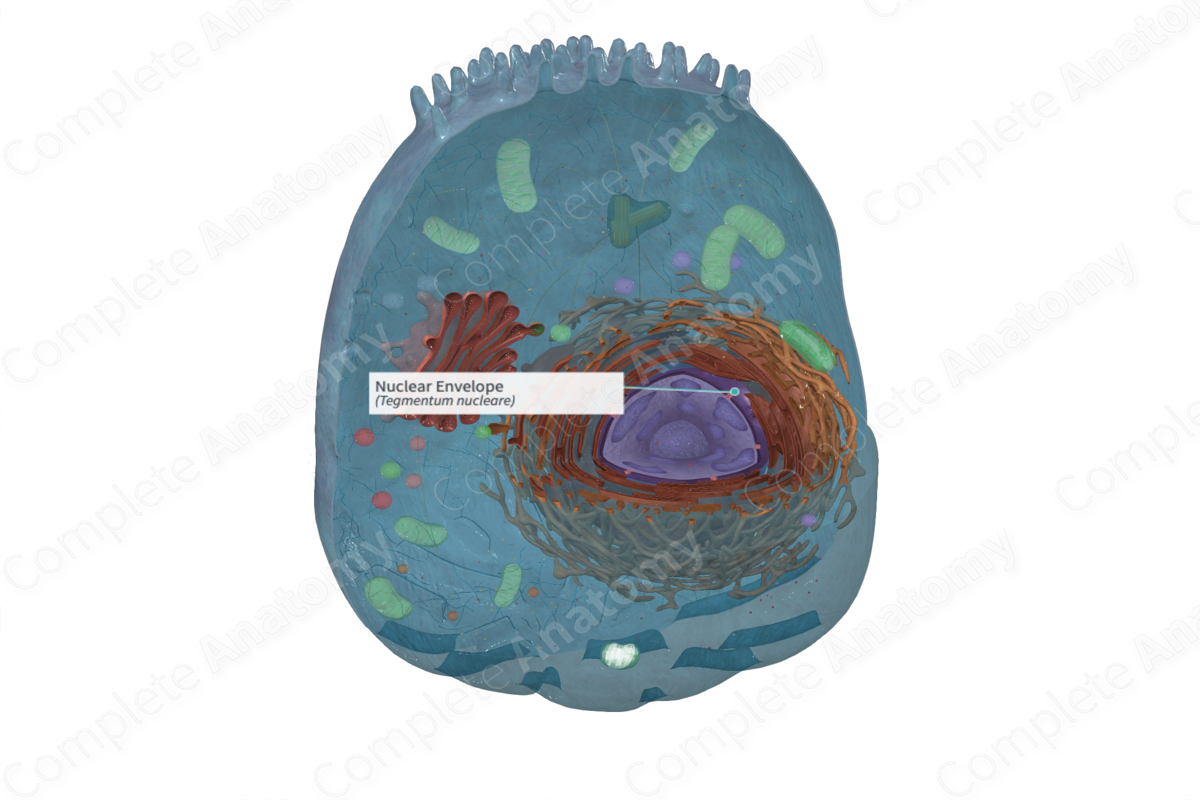
Quick Facts
The nuclear envelope is the structure enclosing the cell nucleus and separating it from the cytoplasm, consisting of two concentric lipid bilayers (the inner and outer membranes) separated by a 30 nm wide perinuclear space. The outer membrane is continuous with the rough endoplasmic reticulum, and nuclear pore complexes bridging both membranes provide communication between the nucleus and the cytoplasm (Dorland, 2011).
Related parts of the anatomy
Structure and/or Key Feature(s)
The nuclear membrane (35-75 nm thick) is a double membranous envelope that surrounds the nucleus. It is not continuous as it fuses to form nuclear pores all the way around the nuclear envelope.
The outer nuclear membrane is continuous with, and of similar structure to, the rough or granular endoplasmic reticulum and so may house ribosomes or polyribosomes.
The inner nuclear membrane has a network of intermediate protein filaments attached to the inner surface called the nuclear or fibrous lamina. This nuclear lamina is a supportive “skeleton” but is also essential for many activities including DNA replication, transcription, and gene regulation.
Between the two nuclear membranes is a perinuclear cisternal space (Ross and Pawlina, 2006; Ovalle, Nahirney and Netter, 2013; McKinley, O'Loughlin and Pennefather-O'Brien, 2016).
Anatomical Relations
The nuclear envelope surrounds the nucleus. The outer nuclear membrane is continuous with the rough endoplasmic reticulum.
Function
The nuclear envelope is a physical barrier that controls the movement of materials between the nucleus and the cell cytoplasm. The fibrous lamina stabilizes the nuclear envelope.
References
Dorland, W. (2011) Dorland's Illustrated Medical Dictionary. 32nd edn. Philadelphia, USA: Elsevier Saunders.
McKinley, M. P., O'Loughlin, V. D. and Pennefather-O'Brien, E. E. (2016) Human Anatomy. 5th edn.: McGraw-Hill Education.
Ovalle, W. K., Nahirney, P. C. and Netter, F. H. (2013) Netter's Essential Histology. ClinicalKey 2012: Elsevier Saunders.
Ross, M. H. and Pawlina, W. (2006) Histology: A text and atlas. Lippincott Williams & Wilkins.
